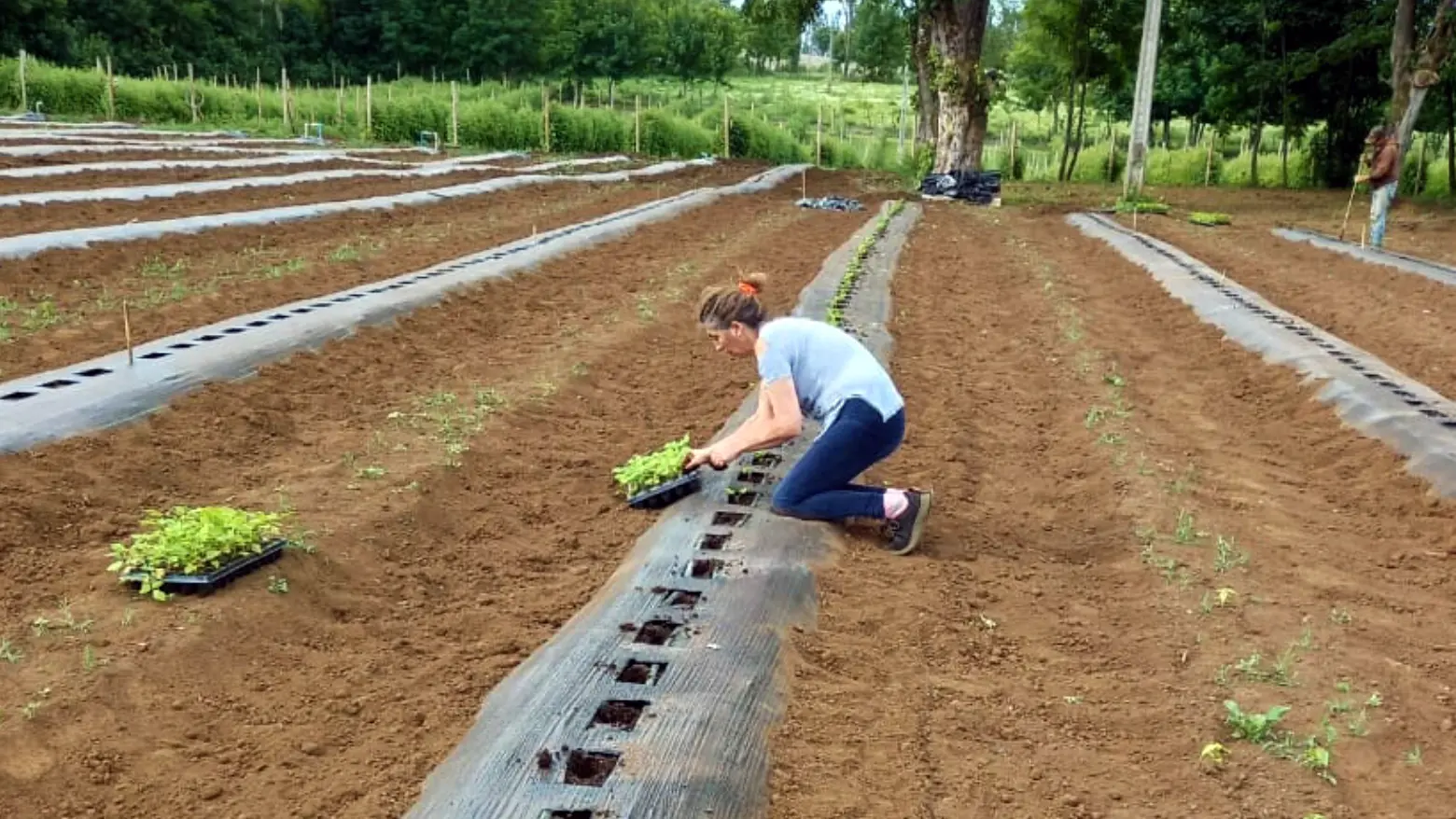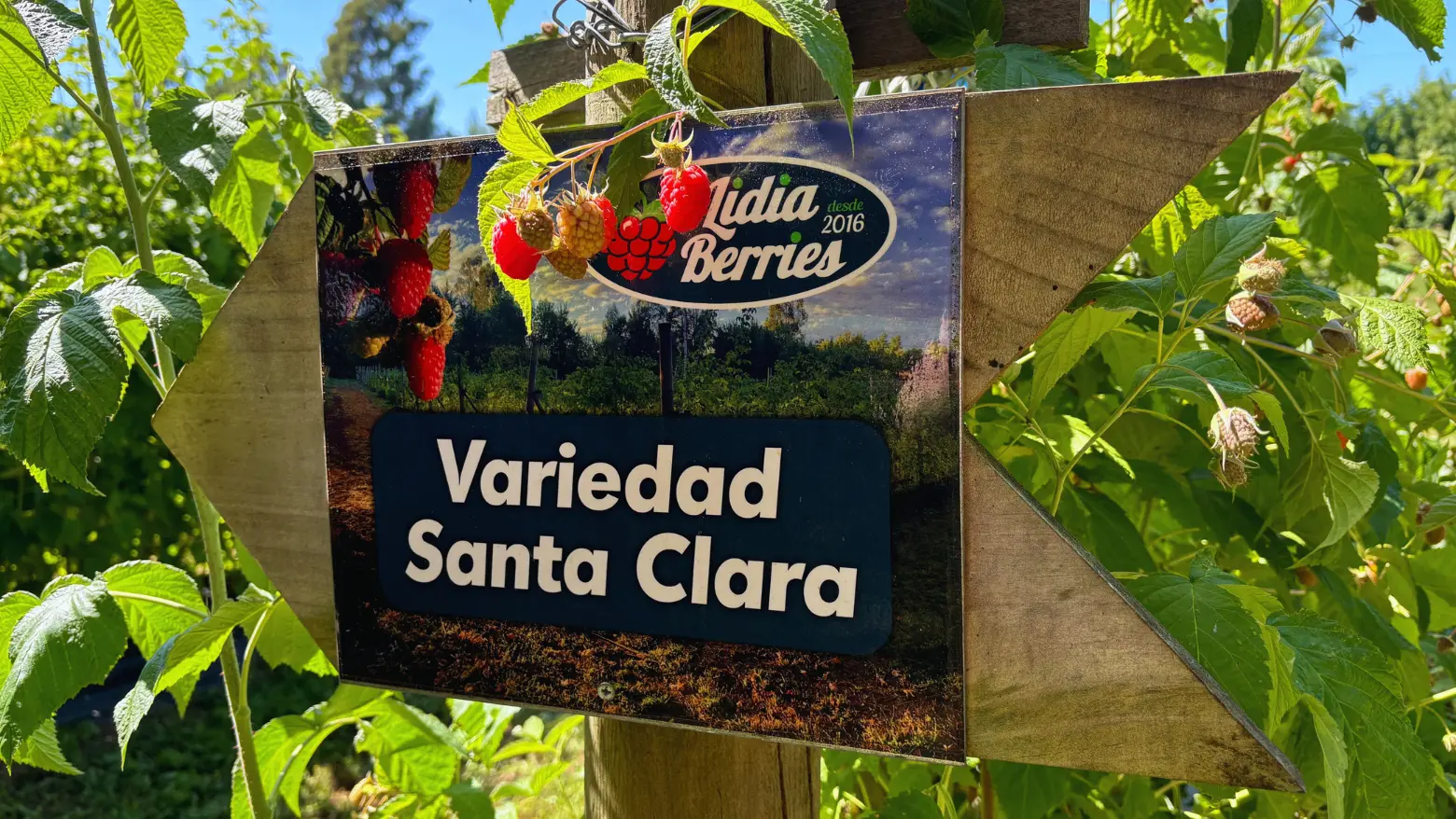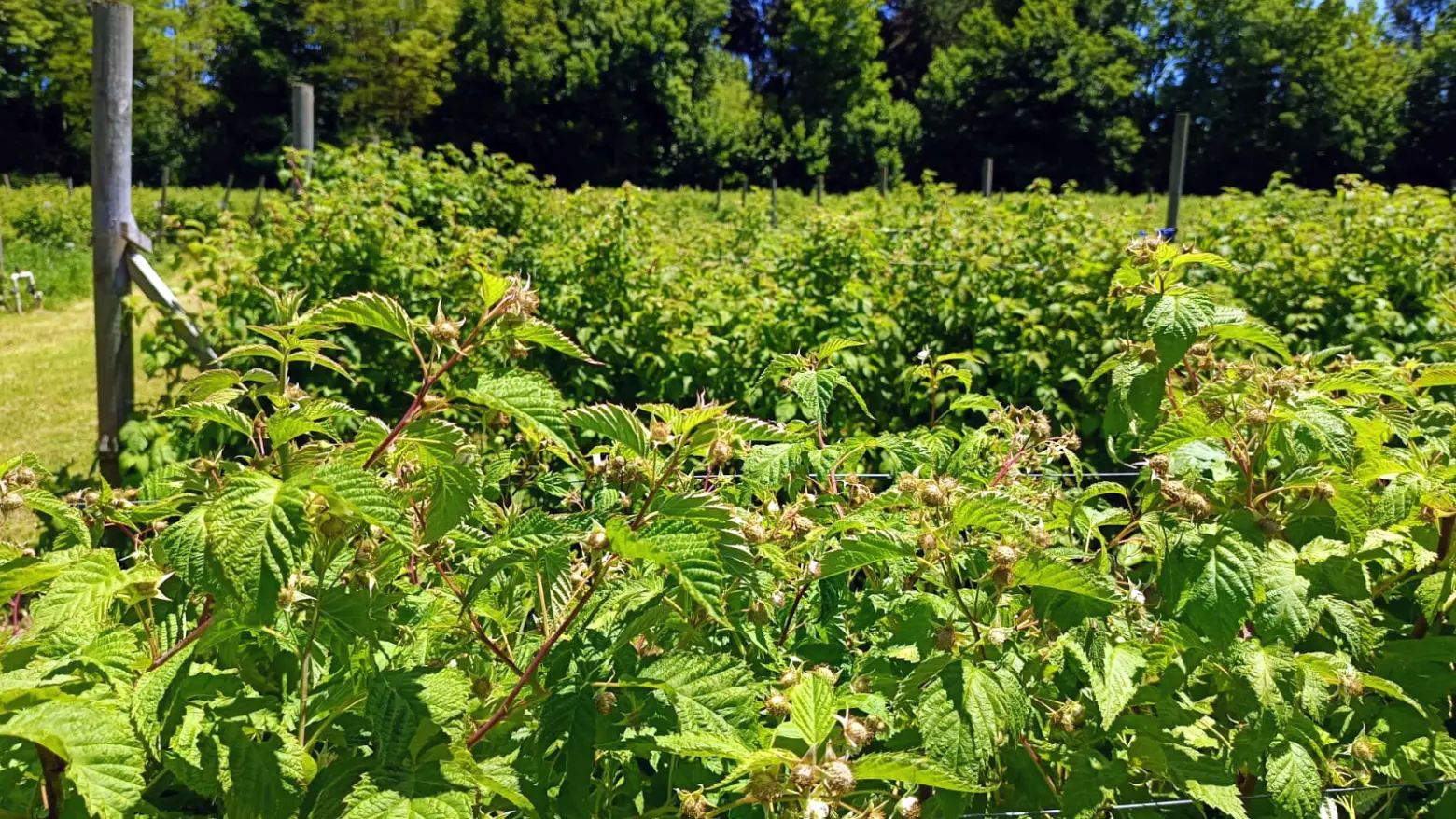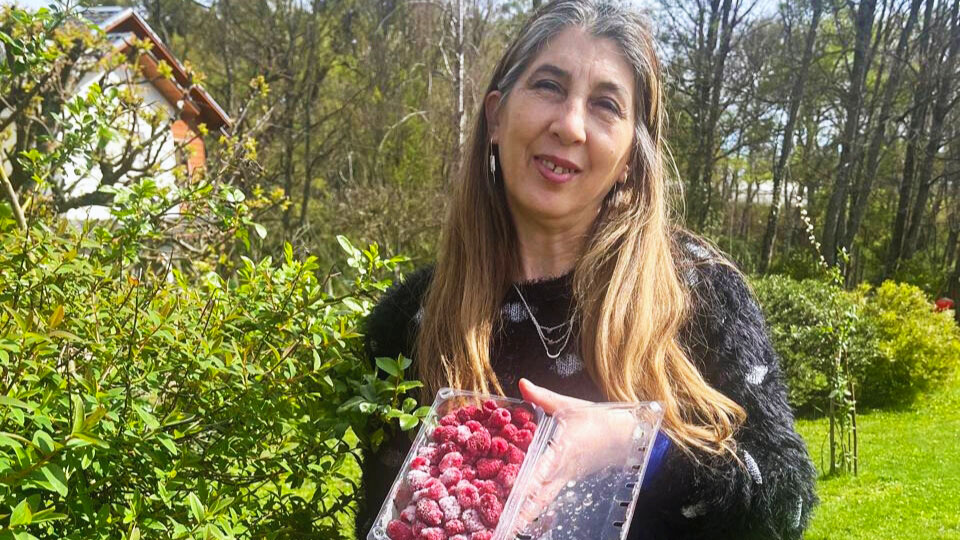Yeny Marlene Aniñir Campos never planned to become a raspberry grower. But living in Chile’s Araucanía region: considered the country’s poorest in terms of GDP per capita, she did what she could to support her family.
“I needed to find a way to generate income to take care of my family,” Yeny says. “The land was there, and so was the will.”
Yeny is a proud indigenous Mapuche woman, a wife, mother of three, and primary caregiver of an aging father and uncle. She spent her entire life in an indigenous community in the Maquehue sector of Padre las Casas Commune, where her family, like many others, traditionally grew cereal crops and grazed cattle. When she heard that farmers in nearby regions were starting to grow berries and making a decent income from small plots, something clicked.
“It took me over a year to convince my family to change crops,” she recalls. “But I had seen what was possible, I didn’t need a huge amount of land to earn a good living. I just needed the right crop and the right support.”

In 2016, Yeny began experimenting with raspberries on a small piece of land offered by her father. With her three sons, she planted 1,500 seedlings of a new variety known locally as ‘Nicked.’ There was no irrigation system, and she had to carry buckets of water by hand. That first crop earned her 600,000 pesos. It wasn’t much, but it was more than she had ever made from cereals.
Encouraged, she turned to the Chilean Agricultural Development Institute (INDAP) for support. Through the Indigenous Territorial Development Program (PDTI), she received small grants and enrolled in an irrigation training course. She even offered her farm as a demonstration site for other farmers in the area. Eventually, a water reservoir was installed: a 20 × 20 × 5-meter tank that allowed her to irrigate efficiently. By her third year, with irrigation in place, she earned 7 million pesos- over ten times what she’d made before switching crops.
Around that time, the government began introducing new raspberry varieties developed by Professor Marina Gambardella of the Pontifical Catholic University of Chile, a leading figure in berry research and Director of the country’s Raspberry Breeding Program.
Professor Marina’s “Santa” varieties: Santa Catalina, Santa Teresa and Santa Clara are protected new raspberry varieties. They were specially bred to yield fruit for up to six months and stay fresh for up to three days, far outlasting older types that lasted barely a day.
In 2018, Yeny purchased 2,500 plants of the Santa Catalina variety. She studied the variety’s needs and even met Professor Gambardella herself.
“The first time I saw the Santa Catalina variety fruit, I knew things were going to change,” Yeny says. “They were sweet, resilient, and perfect for our conditions.”
Thanks to the new varieties, she saw a real opportunity, and that’s when she founded her own company: Lidia Berries.

Today, Yeny cultivates 2.5 hectares of the Santa Clara raspberries; an expansion from her initial quarter-hectare plot and manages a seasonal team of up to 60 women. Many of them, like Yeny, are mothers and caregivers who work flexible shifts that accommodate their home responsibilities.
Yeny credits Professor Gambardella’s work with changing her life. “She is a goddess,” Yeny says with emotion. “Her varieties saved the future of my children.”
She’s now a firm advocate for buying plantlets from certified nurseries and paying royalties to breeders.
“It took Marina ten years to develop these varieties. That work deserves support. Because of people like her, women like me who can’t leave home can still have a good economic future.”
-Yeny Campos

Yeny’s progress mirrors a wider shift in the Chilean raspberry sector.
According to the Manager of the Registry of Protected Varieties in Chile’s Ministry of Agriculture, Mr. Manuel Toro Ugalde, “In Chile there are currently more than 1000 varieties with titles in force in the Registry of Protected Varieties, of which 31 are raspberry varieties and 7 are varieties obtained in Chile known as ‘Santas’.
Chile is one of the main raspberry producers in the world, after Serbia and Poland and its cultivation is in the hands of thousands of small growers. These new Chilean varieties have been exported to Spain, Portugal, Mexico and Australia. The larger size and better fruits and yield of the “Santas” new varieties have allowed growers to obtain more income and better life.”
Still, challenges remain. Climatic stress on agriculture, like unseasonal rains and unexpected heatwaves, threaten harvests. And many farmers and growers especially in rural and indigenous communities still lack access to information about new varieties, quality training and resources.
But Yeny remains hopeful. She believes that access to protected new plant varieties is key to helping growers like her succeed.
Back in the Padre las Casas Commune, what once was a place for grazing cattle is now a field of opportunity. For Yeny and her family, raspberries didn’t just change the farm, they changed everything.
